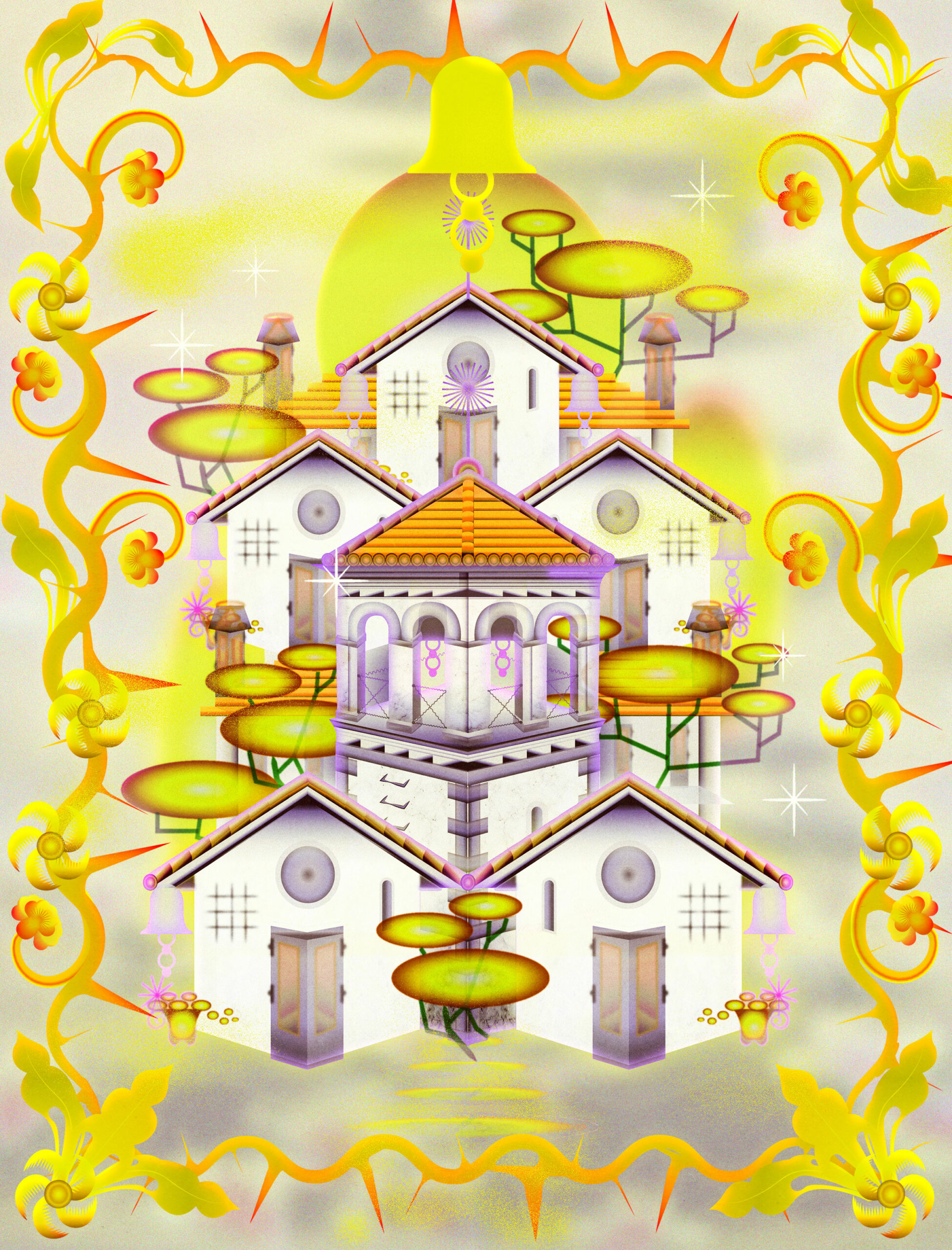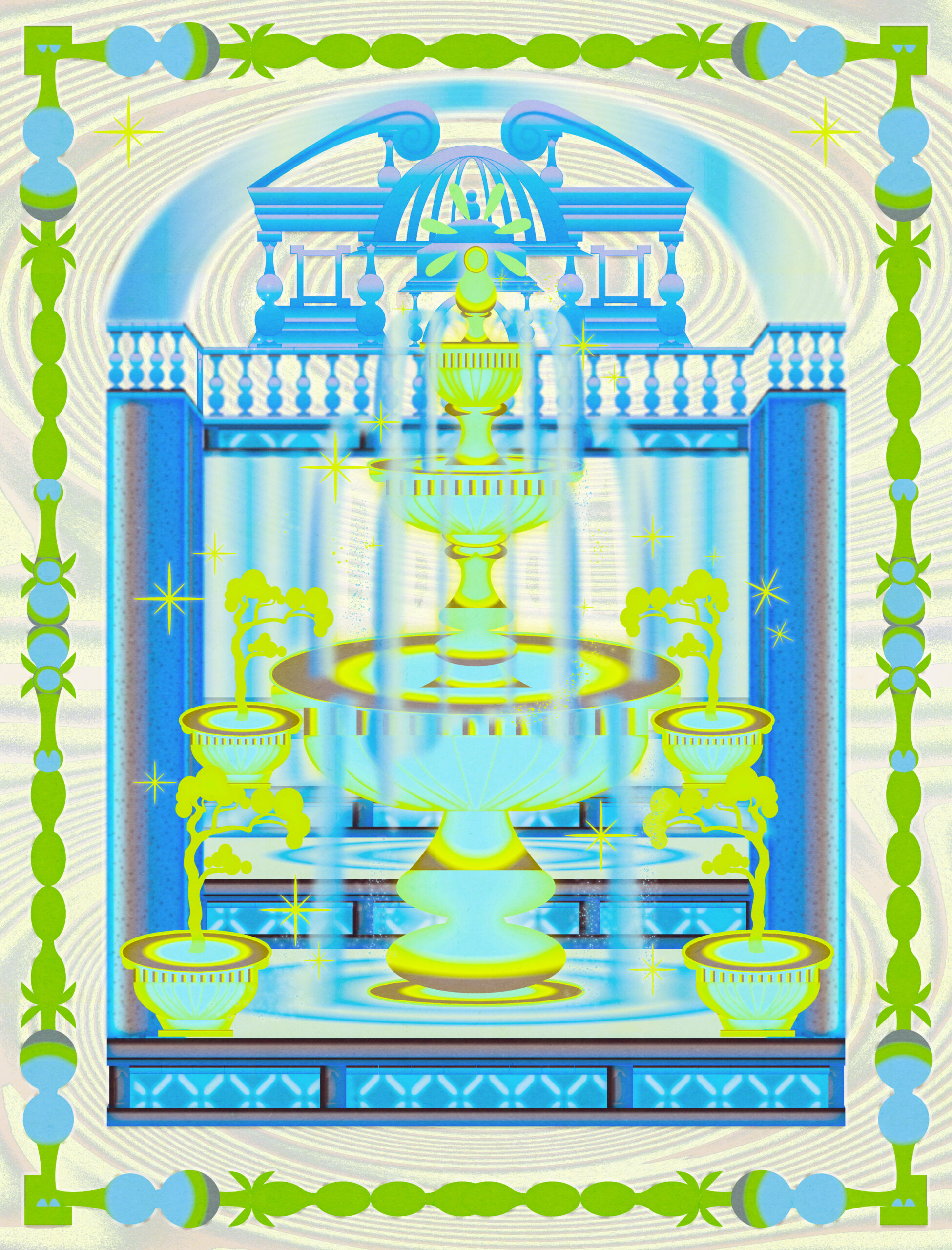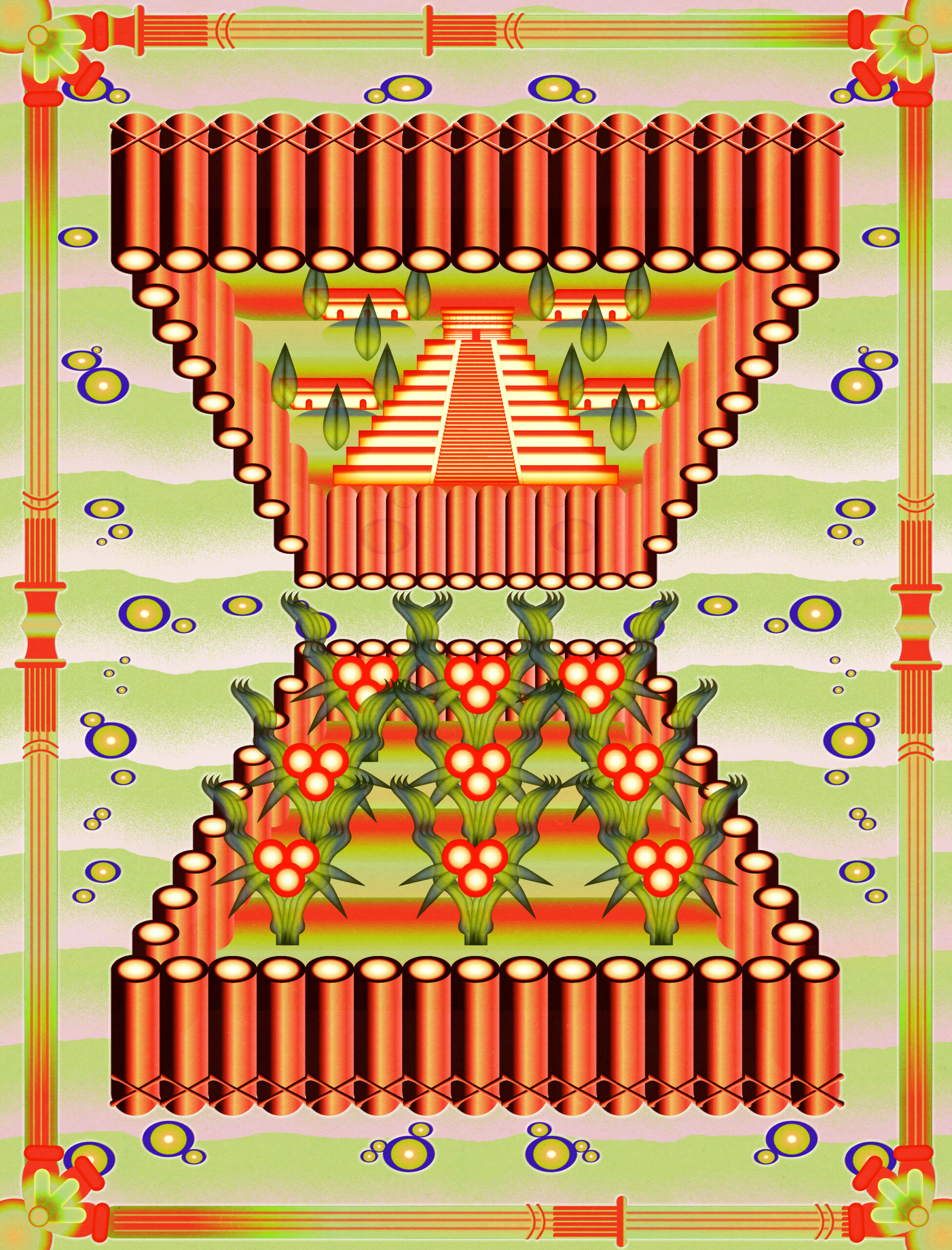In the mountains of the Natisone River Valley, nearly on the border between Slovenia and Italy, lies the small village of Topolò. That’s its Italian name, anyway. In Slovene the village is called Topolove. To Robida Collective, a group of primarily young academics and architects who call the village home, the two names matter. As one member, Dora Ciccone explains, “Topolò is very related to the Slovenian border community, which is a minority in Italy, so we have a special care for culture, for languages.” Most of the group met in Slovene-speaking Ljubljana, two hours by car from Topolò, but now live together, some full time, others for parts of the year, in the village in this bilingual region of Italy. The identity and space of borderlands being so central to their practice, it is no surprise then that their annual publication, Robida Magazine, features pieces in English, Italian, and Slovene, among others (so far, the magazine counts 9 languages published across their 8 issues, with a 9th issue, titled Soil, on the way).
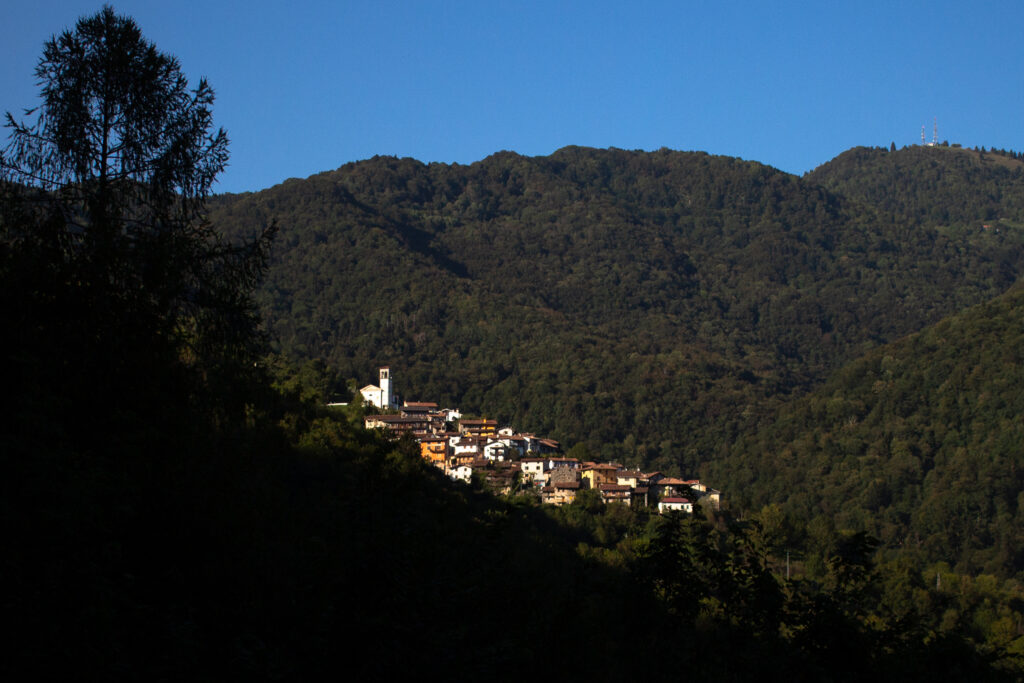
From this annual magazine, to hosting a “Summer School” of collective learning with lecturers and participants from across Europe, to their internet radio station, Robida Collective is exploring, challenging, and remaking the relationship between the small, isolated, rural village they call home and the rest of the world. This connection—between the rural and the global—has long been a preoccupation of my work and is why I sat down with Robida Collective last month to ask them how they understand their village in relation to the urban and the rural, the global and the local, and what relevancy places like Topolò might have for the future.
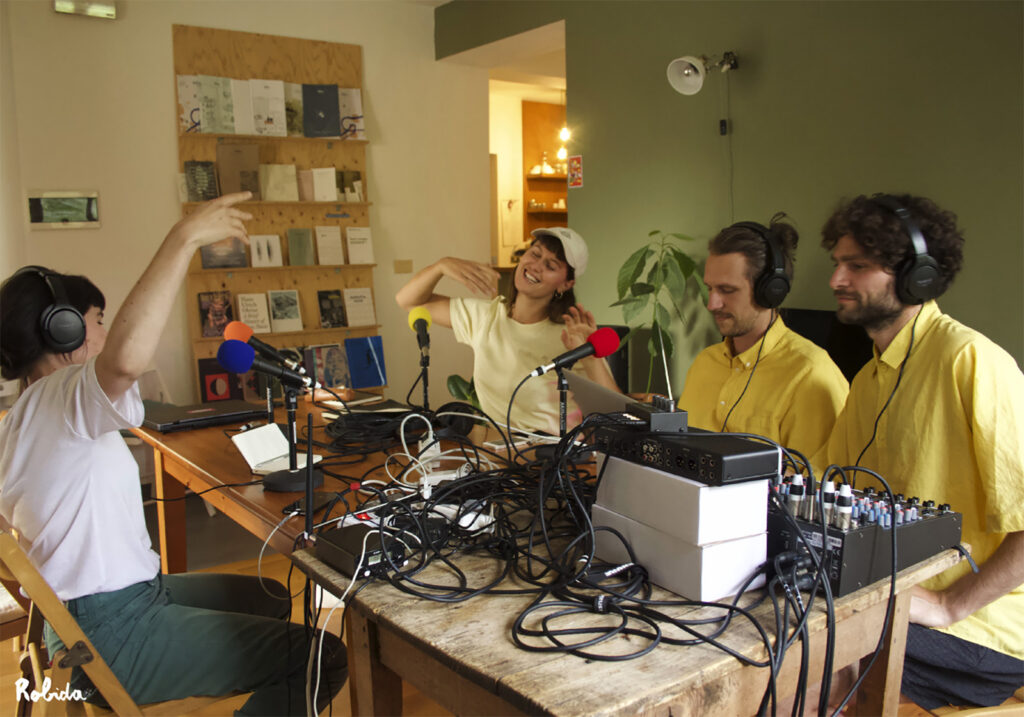
“It’s about showing the super situatedness of what we do, and also of what this place can produce. It’s about showing that this place, as maybe every rural place, is able to produce something that is completely unique.” says Vida Rucli, a founding member and, from my observations during our zoom call earlier this year, the group’s self-effacing leader. With dark eyebrows and bangs punctuating sharp, yet warm, blue eyes, Vida is passionate and earnest about the theoretical underpinnings of her work and might have been mistaken as self-serious (black turtleneck) if not for a perceptible kindness and humbleness in her cadence and her deep commitment to the collective, showcased in her continual deflection of questions towards her collaborators. Like the cultural borders of the village, the membership of Robida seems fluid—on the call with us were Elena, Vida’s sister, sharing her dark hair and bangs and sporting a distinct pair of dark frame glasses, along with Dora, another full-time village resident with a warm smile and messy hair (both calling in from Dora’s home in Topolò), Janja, calling in from her apartment in Ljubljana where she works as an architect, and Aljaž, Vida’s partner, a gregarious, long-haired Slovenian with vibrant expressions who first found himself in Topolò as a retreat to finish his masters thesis in philosophy.
“Robida,” from my Google Translate inquiries, is perhaps best translated from Slovene as “bramble.” Yet I got other results, too— “thorns,” and “blackberry.” This ambiguity is fitting, I think, for it points to something about Topolò that perhaps can’t be translated: proof that some things cannot be taken into the global homogeneity, that special places, specific places, still exist. In addition to referring to the literal “sea of brambles,” as Aljaž puts it, found around the village occupying the now-abandoned farming terraces, the name also suggests something complicated and growing, alive, which, if you wish to grasp it, might require a mindfulness of the thorns, but might also deliver the sweetness of the berry. From the descriptions I heard, Topolò is indeed sweet. “Because it’s up on the mountain, and also what allowed it to remain so beautiful in comparison to other villages around, is that the cars do not enter it. You leave the car in a parking place outside…entering this labyrinth of small streets. It’s all just for pedestrians, and it’s all still paved with stones.” And thorny, too—much of the village landscape is abandoned. Says Vida: “the village nowadays, which counted 400 inhabitants, now has only 25.” Despite the group’s high percentage of architects (at least 3, on our Zoom call), their physical interventions in the village have been relatively delicate: a cafe and event space, called Izba, a home for an artist residency program, and a small sculptural element in the woods by the creek, this last entry authored by guests from Amsterdam, Studio Wild. “Our idea is to not intervene in a radical way…not to be too invasive,” says Janja, who completed her architectural thesis about, and living in, the village. It seems they aren’t too eager to cut down the overgrowth, but rather live within its branches.
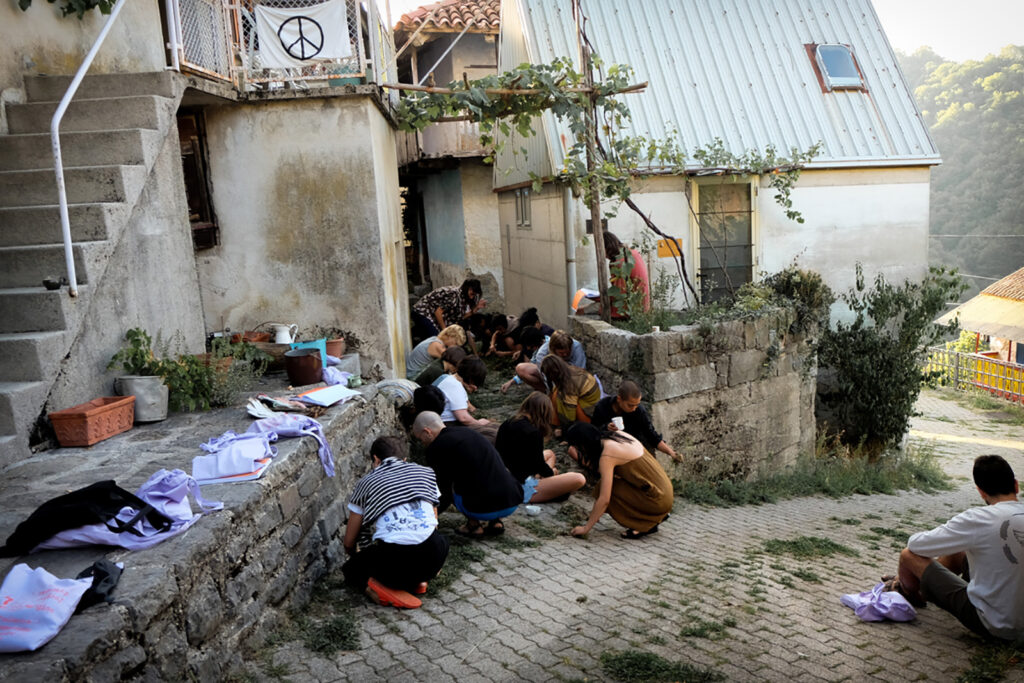
So, what does Robida do, exactly? What are these designers…designing? This is a question I’ve personally confronted more times than I’d like to count in my recently completed stint in architecture school—specifically: what is the role of design in community work, what we might call “social practice?” To Robida members, it starts with daily life. “I was living in a house/room that is connected to Vida’s house, it has a separate entrance, but it’s only one room. So I lived with Vida, but at that time we didn’t have a bathroom in this house, so we were using the bathroom in another house, and we were also living in close relationship with Dora, who lived in another house.” remembers Janja. “Our daily life was moving around the village.” With their homes in various states of habitability, “We were living and sleeping in one house, eating in another, washing in another.” The project became an act of sharing domestic space at the scale of the village, both indoors and in the public space; a practice they began to call “the village as a house.”
This isn’t the first social experiment to find its home in the village’s narrow streets: Stazione di Topolò/Postaja Topolove a festival which has been held in the village every summer since 1994 until it’s finale just last year, brought an international assortment of musicians and artists to the village, where concerts were held in the alleys and in abandoned homes. Several members of Robida attended as children and as such, might be understood as inheritors of this creative presence in Topolò. “We are a second generation that are doing things in a different way” says Dora. I suppose the abandonment, paired with the natural beauty of the surroundings, is a powerful draw for any creative. As Elena admitted, “I moved, I think, firstly because of not paying the rent in Venice.” But the abandonment points to a longer history, and the group’s interest in it is driven by a desire to engage with larger political forces, with “cultural production in this small area of Northern Italy.”
Slovenia—a young country, by any measure, with its constitution ratified in 1991—sits upon a sensitive tangle of national and cultural identities. Prior to the fall of the Eastern bloc, “this area was considered a military zone.” says Vida. “You could not take photos. You could not make drawings of the territory. Everything was very controlled in the village itself.” Aljaž elaborated: “this northern part of the border between Yugoslavia and Italy, was one of the toughest between the East and the West.” This is a significant reason for the village’s depopulation, what Vida describes as “a kind of political strategy, to have a territory which is easier to control.” The group aims to engage with the complex history, from “the pressure towards the Slovene minority in Italy of not speaking Slovenian because of fascism in the beginning of the twentieth century” to Cold War “tensions towards the Slovene minority, because of the division between a Communist bloc and the, let’s say, Capitalist bloc.” In this way, contemporary habitation itself becomes an open question about identity and history, what Aljaž describes as a “situated knowledge.”
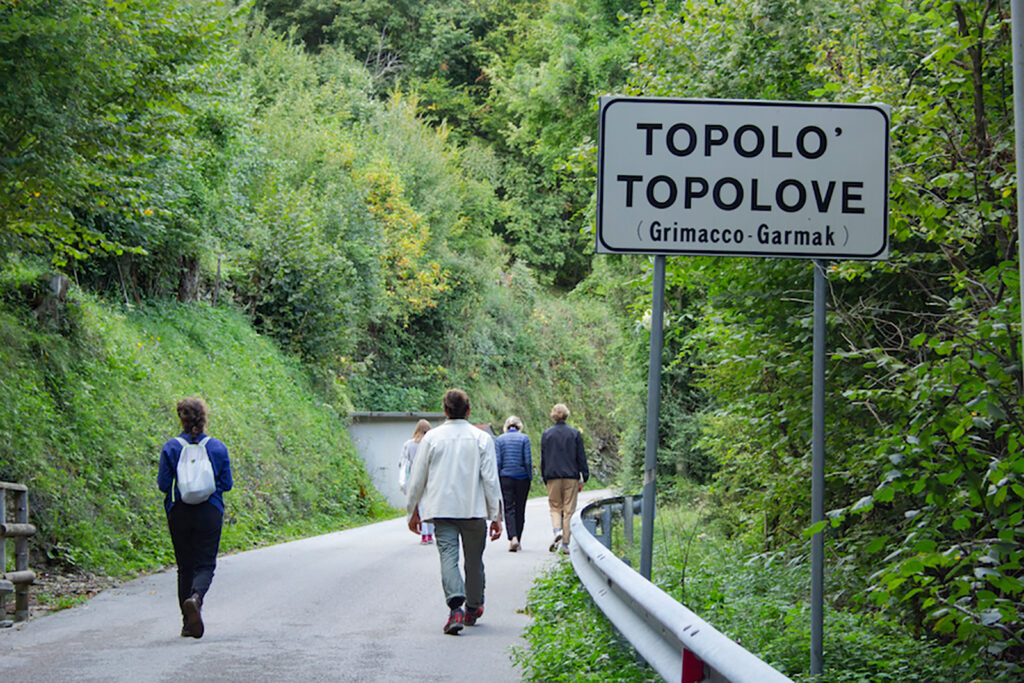
As an American, where true villages are no more, the village holds a particular romantic sway over me: a place where that “situated knowledge” of living well together might escape the alienation of contemporary lifestyles. Yet when asked about the validity of this, the inherent specialness of village life, I was met with skepticism. “In Italy. No one would ask, ‘What is a village?’ or what to understand as a village,” said Vida, “here, as in the whole of Europe, they are such precise types of settlements.” Still, I see Robida as part of a larger movement of Europeans re-evaluating the village and rediscovering its value as a unit of the larger urban and multi-national framework. And a still larger reckoning with the idea of rurality. (In academia we see permutations of “village studies” crop up every few years.) Robida is even part of The Rural Commons Assembly, a platform which has convened conferences to bring together similar such rural projects and groups. Other works, like a recent CCA curatorial project by German architect Nick Farensa on “rural commoning” come to mind, or other artist collectives such as Hinterlands, Inland, or MyVillages. In our conversation, Aljaž pointed out that the etymology of the word for village in Slovene, Vas, comes from the Indo-European u̯ei̯k “to enter, to settle into.” “And so we settled in the fabrics or something, and to me this was super nice for the village. To settle in, you know, to dwell.”
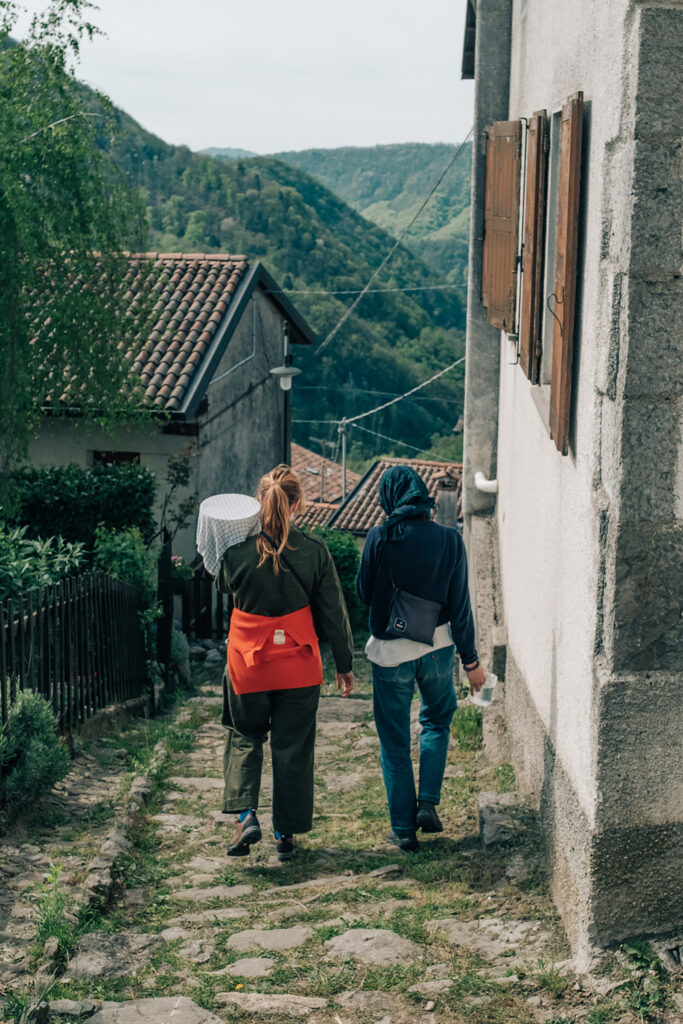
When asked what Topolò means to them, Vida responded that it was “to borrow the words of bell hooks, a place of not only ‘radical possibility,’ but also ‘embodied history’…by being here, we are embodying history, we are working with the history [of the place], not forgetting it.” I looked up the full quote Vida made reference to, because I hadn’t heard it before. bell hooks writes, in a piece titled “Choosing the Margin as a Space of Radical Openness,”: “I am located in the margin. I make a definite distinction between that marginality which is imposed by oppressive structures and that marginality one chooses as site of resistance—as location of radical openness and possibility.”1 We might see the privilege of the Robida crew in choosing a margin that happens to be an idyllic village in the mountains preserved from the ravages of capitalist development. But I think that would be unfair, or at the very least, missing the point. What the Robida members have offered, primarily, is earnest questions, and a spirit of maintenance and care.
- 1. hooks, bell “Choosing the Margin as a Space of Radical Openness” from Yearnings Race, Gender and Cultural Politics (1989 )
A real tension surfaced, at first, between the few long-term residents of the village and these newcomers. It dissipated, with time, because “they saw we aren’t on the computer doing nothing—they saw us cleaning, doing the garden.” said Vida, “Because doing the garden meant being stable there.” I asked them, in closing, who was the audience for their radio station, their magazine: their fellow villagers, their city-dwelling friends, or someone else? “I feel that what we do…sometimes the audience is the village itself,” said Aljaž. “Sometimes when we are doing the radio, we are actually broadcasting to no one.” I picture Aljaž, or Vida, or Dora, Janja, or Elena, talking softly into the microphone, the only other sound in the village is the wind blowing gently through those brambles.
- 1. hooks, bell “Choosing the Margin as a Space of Radical Openness” from Yearnings Race, Gender and Cultural Politics (1989 )
